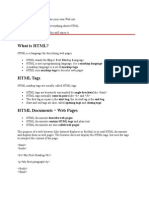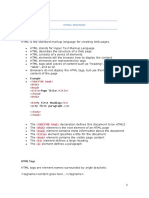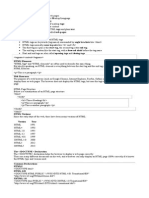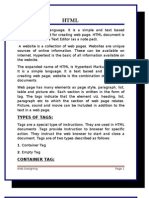0% found this document useful (0 votes)
36 views10 pagesHTML Basics: Structure & Elements
Web Designing using HTML(Part 1)
Uploaded by
Vimal VijayakumarCopyright
© © All Rights Reserved
We take content rights seriously. If you suspect this is your content, claim it here.
Available Formats
Download as PDF, TXT or read online on Scribd
0% found this document useful (0 votes)
36 views10 pagesHTML Basics: Structure & Elements
Web Designing using HTML(Part 1)
Uploaded by
Vimal VijayakumarCopyright
© © All Rights Reserved
We take content rights seriously. If you suspect this is your content, claim it here.
Available Formats
Download as PDF, TXT or read online on Scribd
/ 10






























































